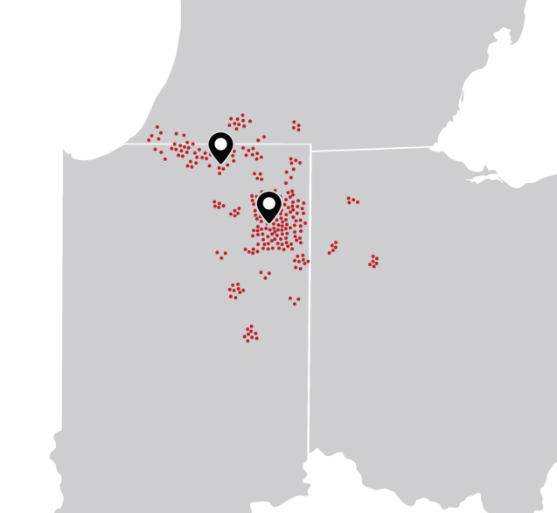By Nick Dancer and Abigail Reuille
While the gray hues of natural concrete are certainly appealing, sometimes colored concrete is desired to fit the look a client is envisioning. Adding color to concrete that has already been poured and cured is an option that Dancer Concrete Design offers when polishing a concrete floor.
There are two different ways to add color to concrete – Penetrating Dyes and Reactive Stains – and each has its own unique set of benefits and reasons for use. It is important to clarify traffic patterns, stain resistance needs, and overall aesthetic of a space before selecting a coloring method.
Penetrating dyes are the more affordable coloring option of the two. These dyes penetrate the concrete surface much like wood stains penetrate wood. While some variation throughout the floor can be expected, dyes create a more uniform, vivid color throughout the floor. Dyes are typically chosen for their fast installation time, affordability, uniformity, and the bold coloring they produce. Keep in mind that penetrating dyes cannot be used outdoors and are more susceptible to discoloration than reactive stains.
Reactive stains contain mineral compounds that “react” with the cement in concrete, creating a marbled and unique coloring pattern in the floor. When applied, the stain appears as greenish yellow. After reacting with the cement, the color turns to a rich brown or leathery red. Because of this process, reactive stains are available in earthy tones with limited color options. Reactive stains offer a more permanent solution and most colors can be used outdoors. All reactive stains can be implemented indoors as well.
Whether a dye or stain is selected in the design process of planning a space, there is a concrete coloring method that can fit every situation and style. It is important to keep in mind the benefits of each, how the space will be used, and the overall desired design of the end environment.

